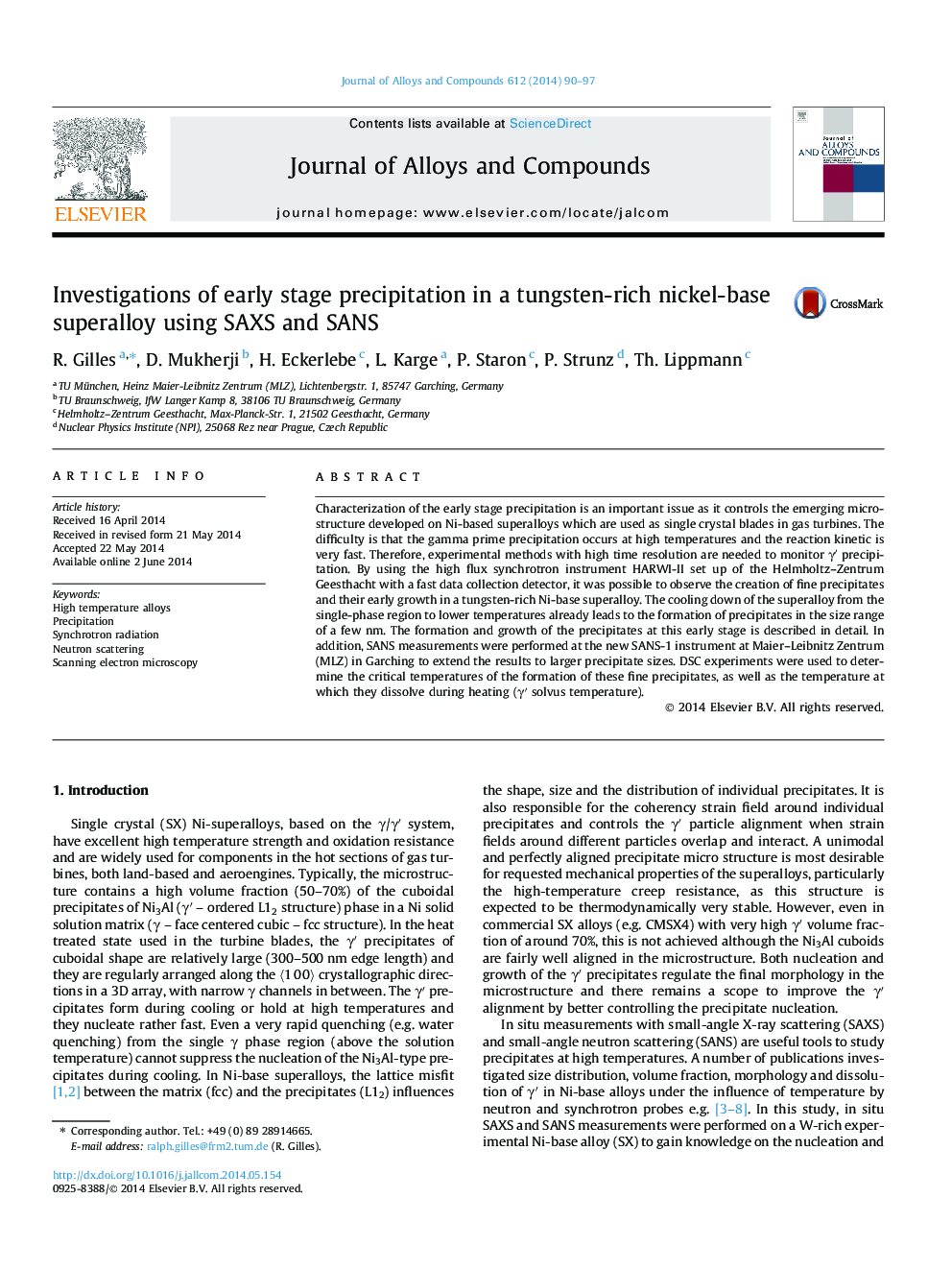| Article ID | Journal | Published Year | Pages | File Type |
|---|---|---|---|---|
| 1610723 | Journal of Alloys and Compounds | 2014 | 8 Pages |
•In situ SAXS at high T of W rich Ni-based superalloys on forming γ′ precipitates with very high time resolution (2–3 s).•DSC, SAXS, SANS and SEM to determine γ′ precipitates in the dissolution, forming and growing process.•In situ study of all critical T‘s for γ′ precipitation up to very high T (1750 K) with DSC.•Although very low scattering contrast for W3SX alloys SANS received growth information.
Characterization of the early stage precipitation is an important issue as it controls the emerging microstructure developed on Ni-based superalloys which are used as single crystal blades in gas turbines. The difficulty is that the gamma prime precipitation occurs at high temperatures and the reaction kinetic is very fast. Therefore, experimental methods with high time resolution are needed to monitor γ′ precipitation. By using the high flux synchrotron instrument HARWI-II set up of the Helmholtz–Zentrum Geesthacht with a fast data collection detector, it was possible to observe the creation of fine precipitates and their early growth in a tungsten-rich Ni-base superalloy. The cooling down of the superalloy from the single-phase region to lower temperatures already leads to the formation of precipitates in the size range of a few nm. The formation and growth of the precipitates at this early stage is described in detail. In addition, SANS measurements were performed at the new SANS-1 instrument at Maier–Leibnitz Zentrum (MLZ) in Garching to extend the results to larger precipitate sizes. DSC experiments were used to determine the critical temperatures of the formation of these fine precipitates, as well as the temperature at which they dissolve during heating (γ′ solvus temperature).
